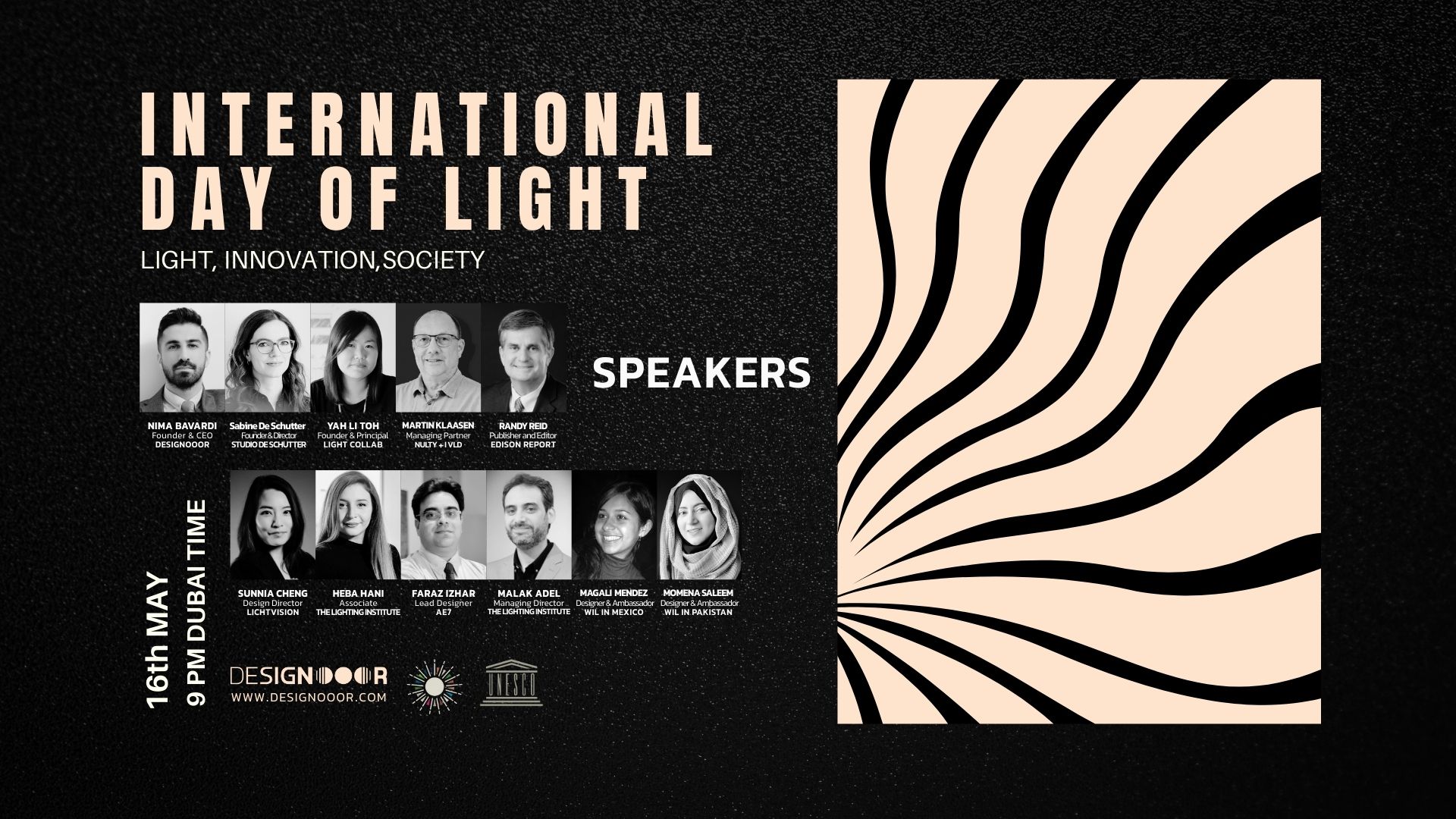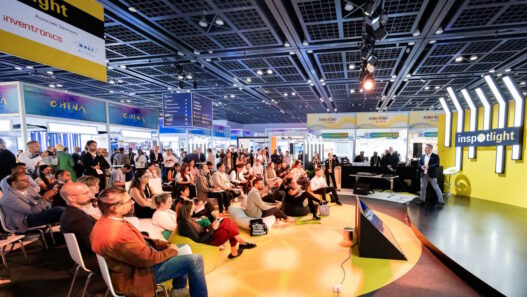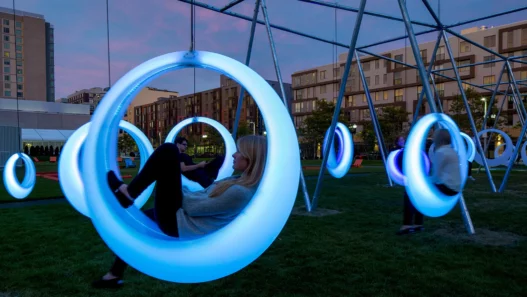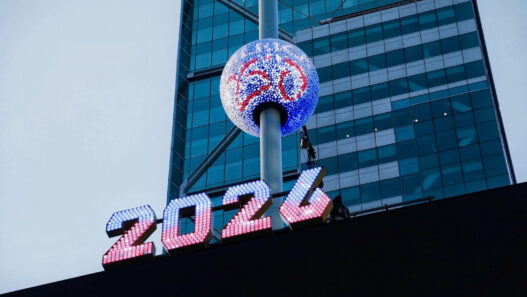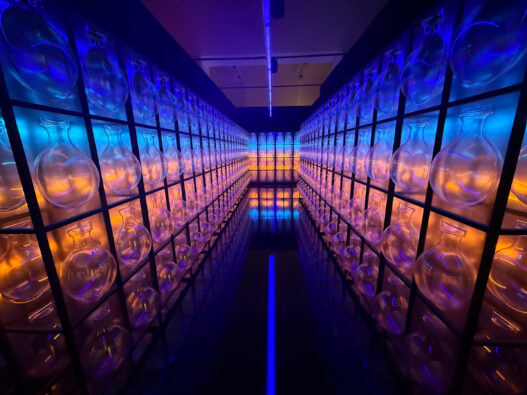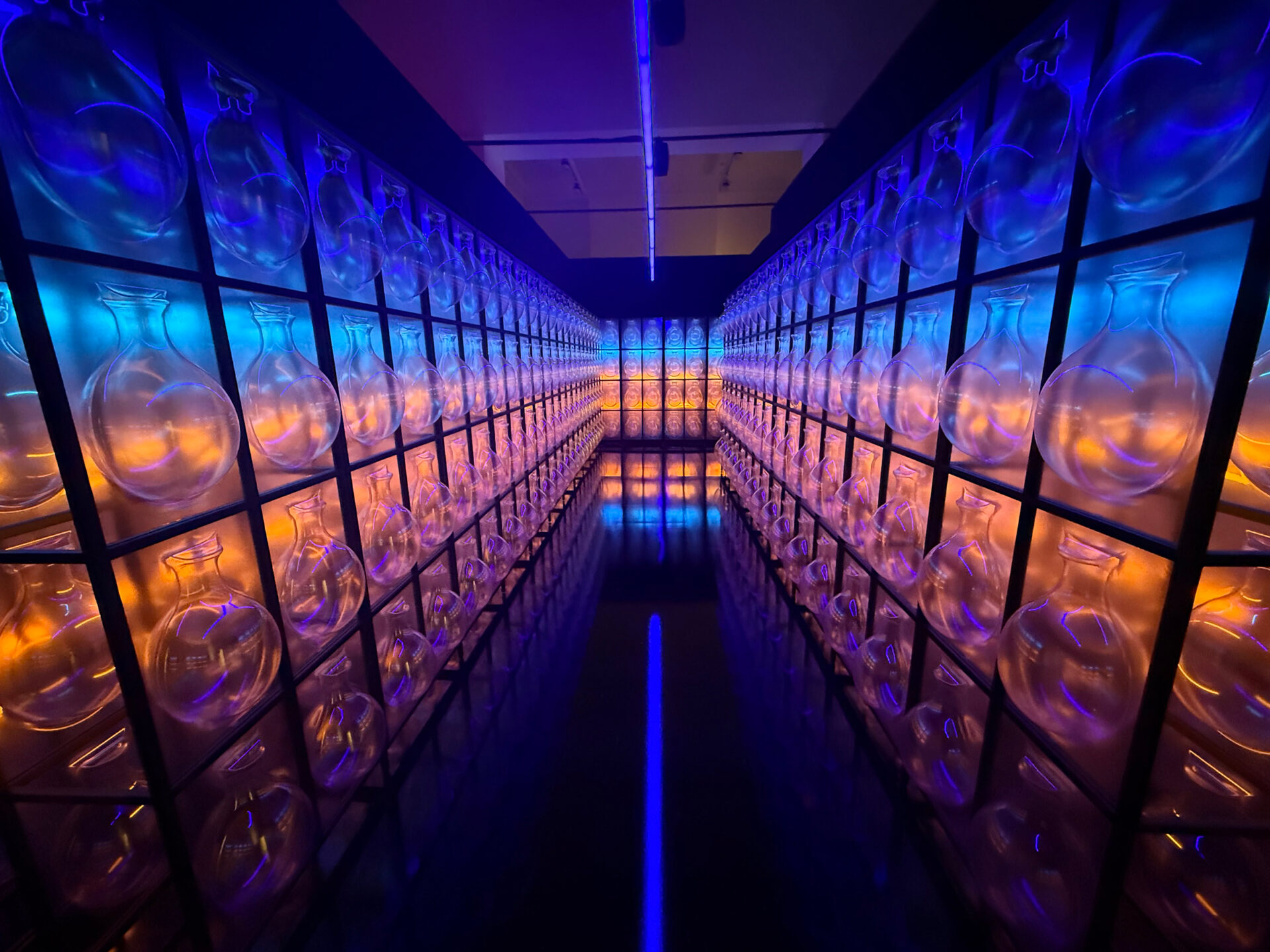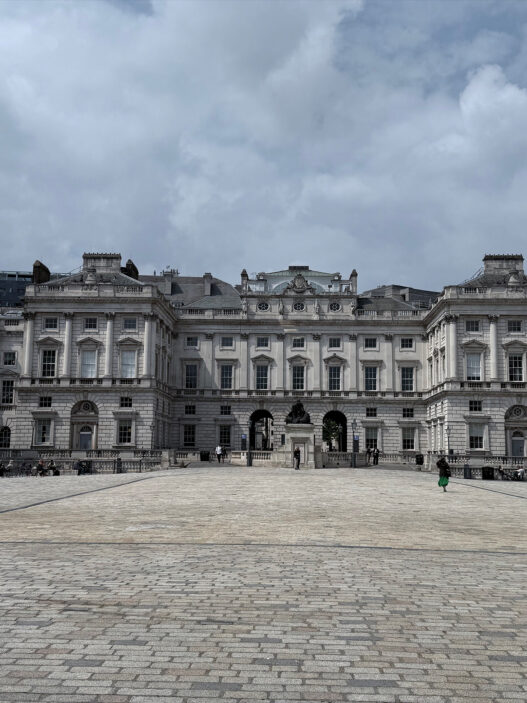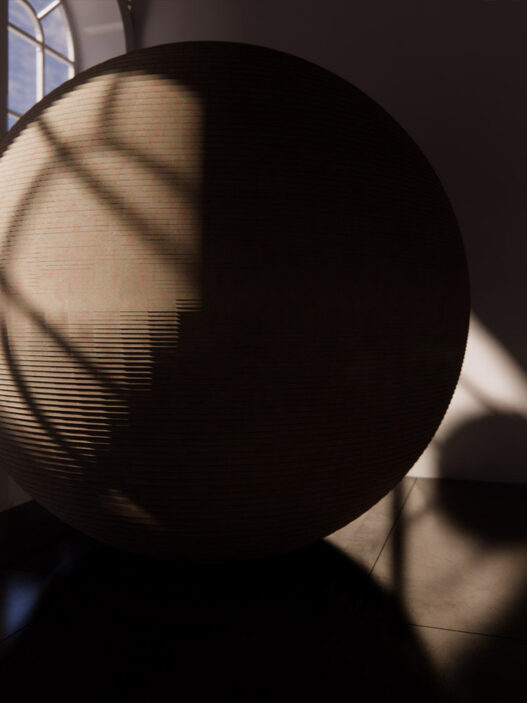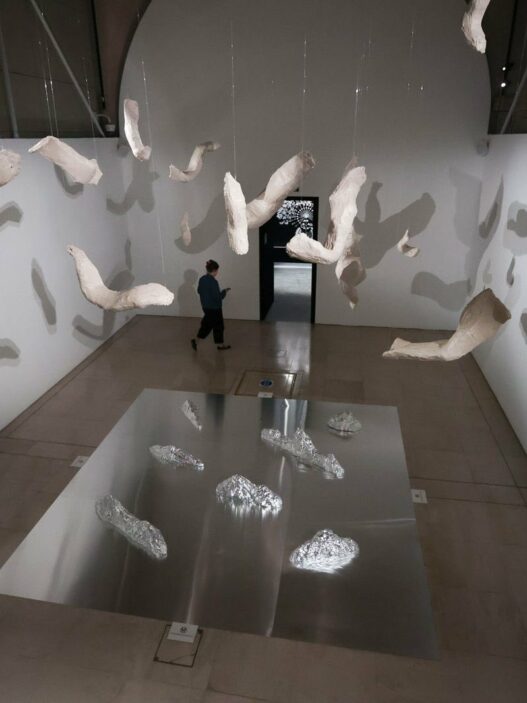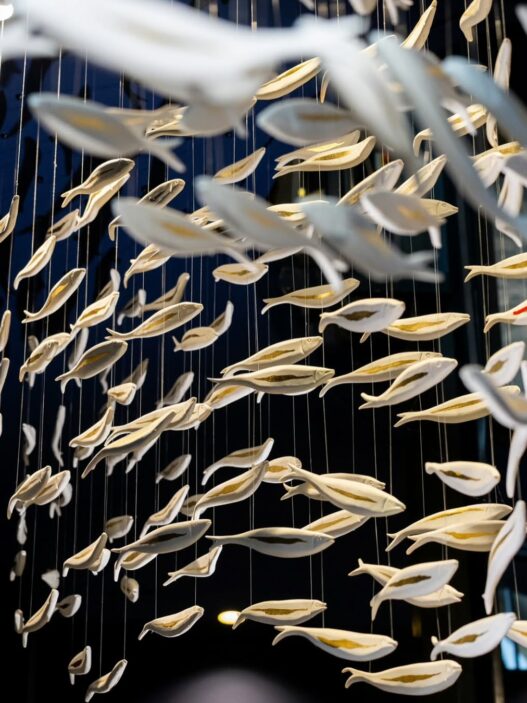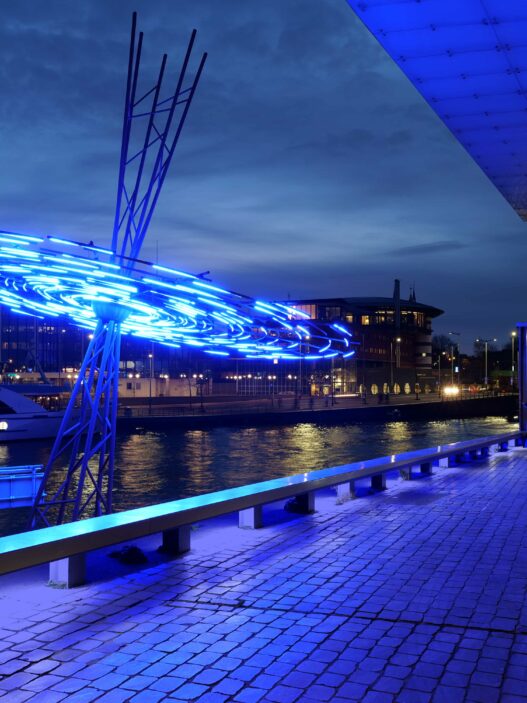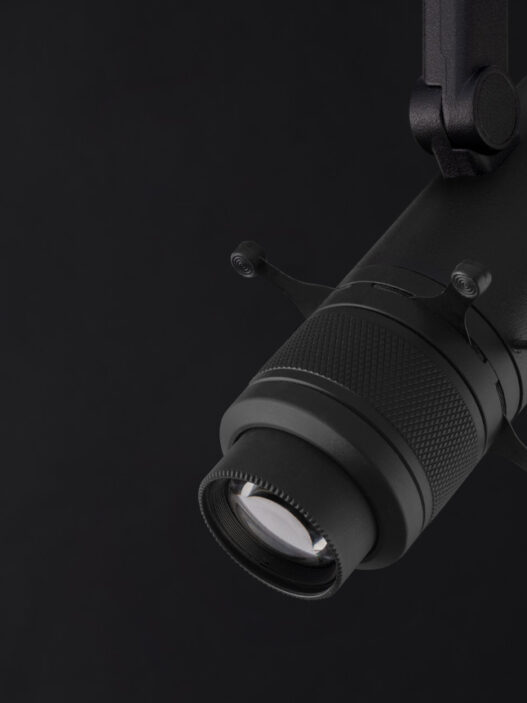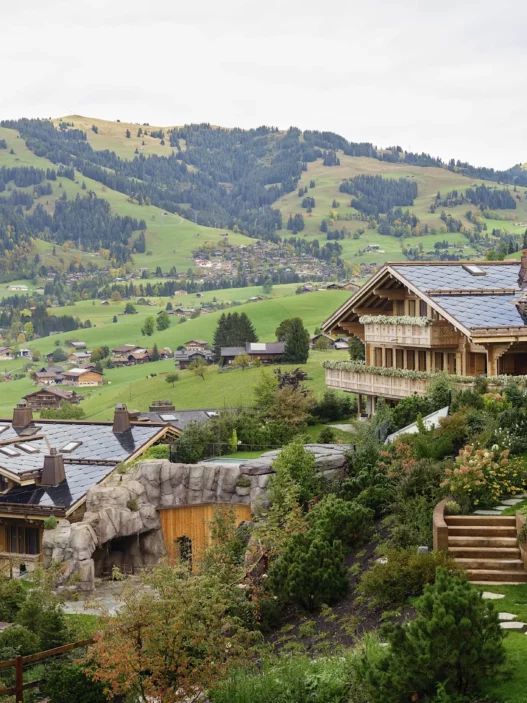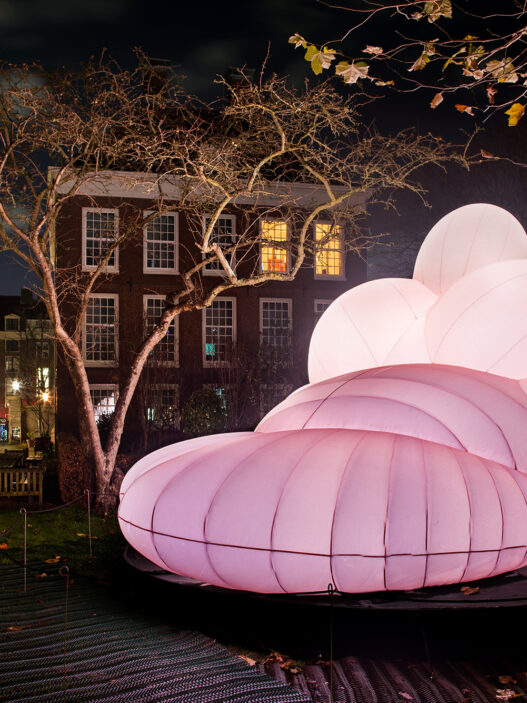Having made a public appearance at the Biennale and already winning the Best Design Medal, the pavilion of the Sultanate of Oman offers a rather subtle but striking version of the Surface Reflections concept. Composed by the Muscat-based Zawraq Collective and constructed by Haitham Al Busafi, an architect, the exhibition, Memory Grid re-contextualizes the 3000-year old Omani water jars into the current carriers of culture, the servers. ranks of machine-milled transparent jars are displayed in an ideal grid that can be read as a walk-in data centre, with visitors encouraged to speculate as to what we used to keep in clay and what now we trust in code.
Aesthetic strategy
The room is left almost pitch dark to the point where the forms of the pottery on their own create the lights. The direct edge-lit LED tracks on the steel structure gently illuminating one side of the grid are a cool digital blue and the other side emits more of an amber glow of desert sunset and baked clay. The delicate two-tone palette is stating less the metaphor rests in colour rather than content, data versus earth past versus present, the contoured forms of the dishes suggesting a vertical structure, catching the light at grazing angles, creating an animated shadow made of crescents that slip along with a movement in front of them. The back of the sensory field is completed by a low, server-like voice created by sub-bass transducers that fades the line between archeology and algorithm.
The room is almost black and the pottery shapes by themselves emit light. On one side of the grid, LED rails added at the edges of the distinctive steel frame are lit with a cool digital blue, whereas the other side is filled with an amber hue that alludes to desert sunsets and fired clay. The muted two-color scheme makes clear that it is the use of colour, not the content, to carry out the metaphor of data vs. earth, present vs. past, whereas the curved outline of the vessels interacts with grazing light creating crescent shadows which spring into life as you move around. The sensory field is filled in by low, server-like, hum created by sub-bass transducers, erasing the distinction between archeology and algorithm.
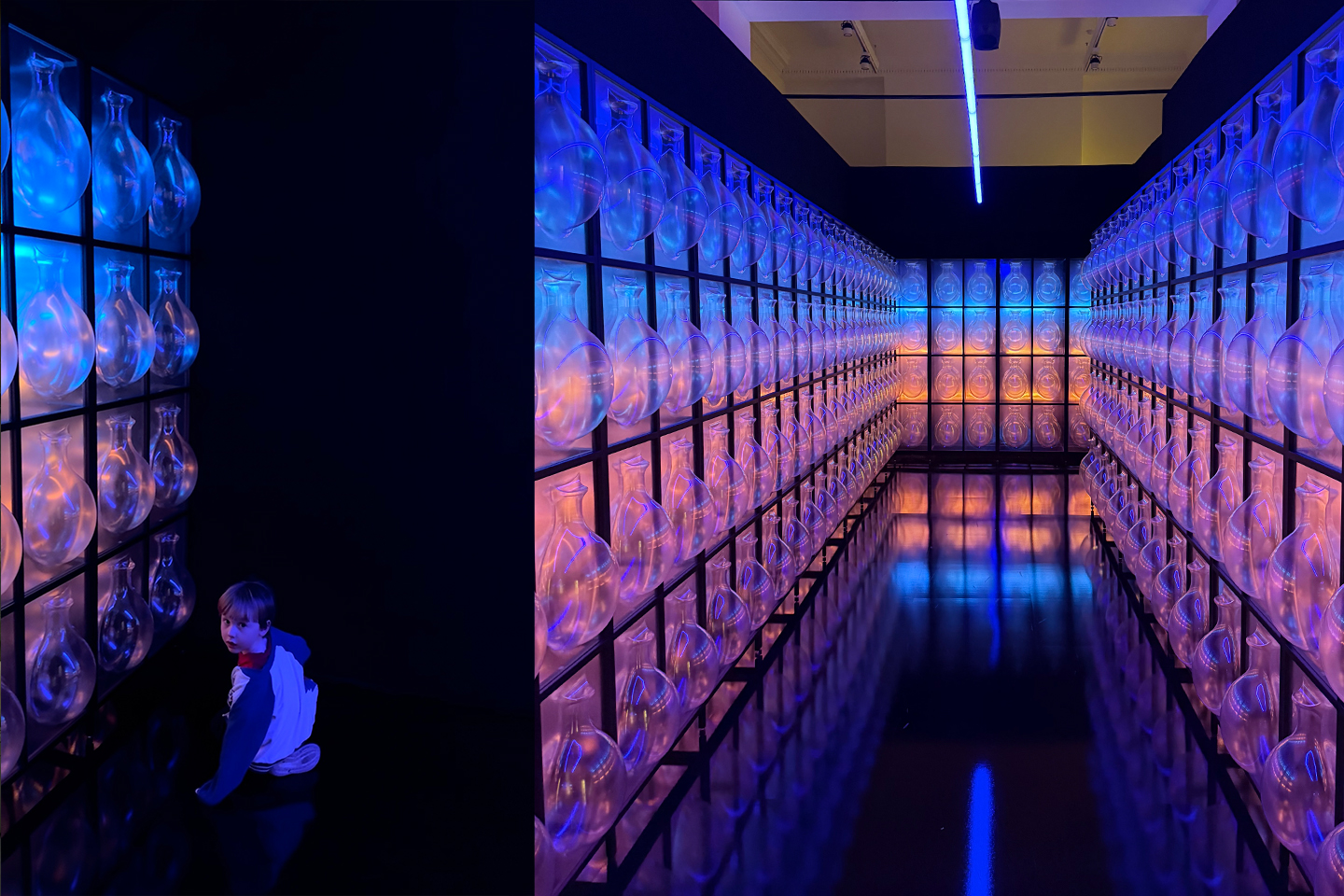
Lighting specialists technical notes
Fixtures & optics- The custom-formed linear LED boards (tunable white 2700-5000 K) are mounted in aluminium channels adjusted at 5 o tilt to reduce glare and produce the required grazing effect to bring out the curvature of the vessels.
Control, A two rail DMX profile (warm & cool) gives twenty average cross-fades / 5 minutes and the luminance remains < 30 cd/m 2 to allow the eyes of visitors to get used comfortably to darkness.
Diffusion The edge lighting of the acrylic vessels eradicates hot spots and maintains power loads extraordinarily low (< 2 W per artefact).
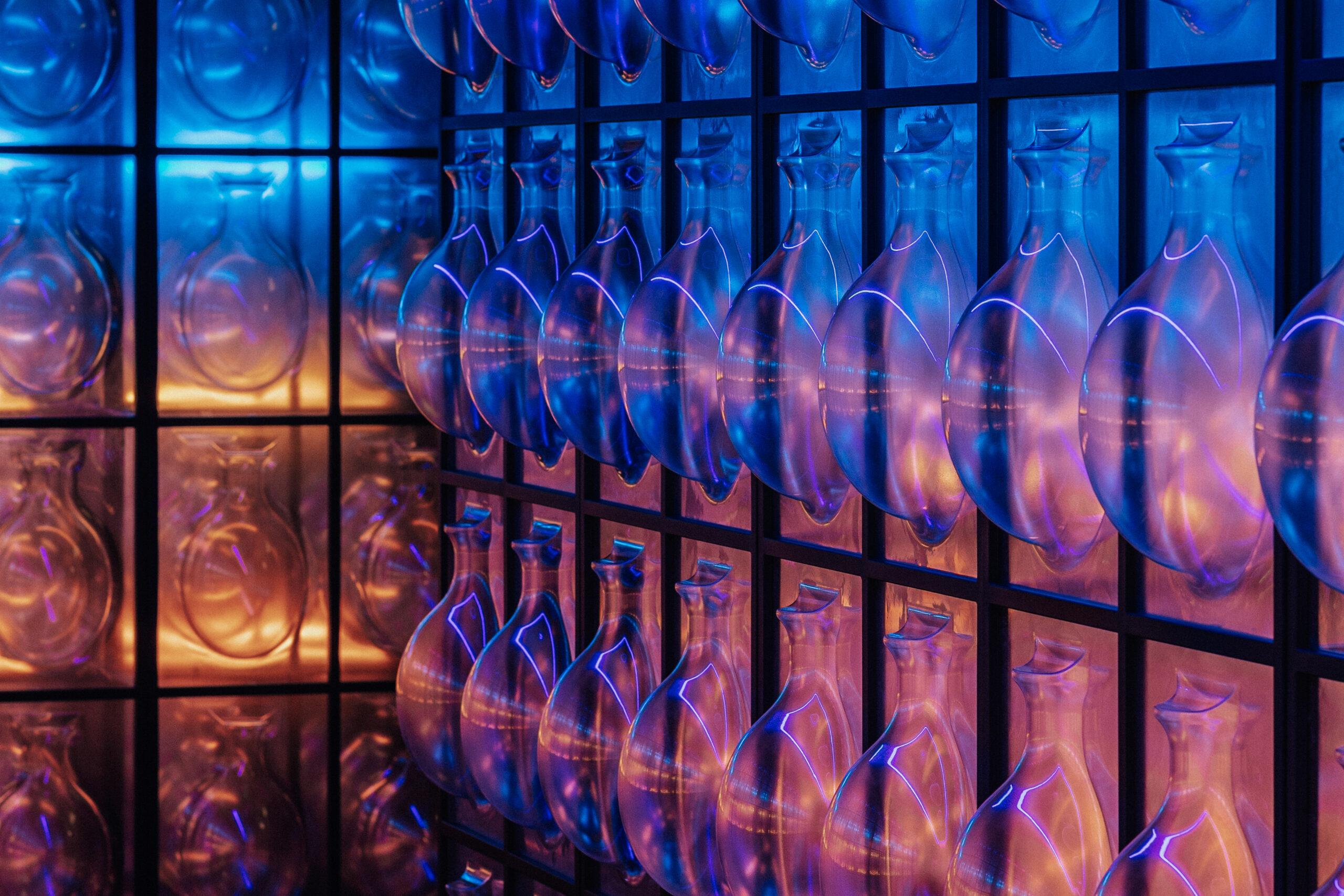
The reason why it is important
Combining time-tested craft skills with some of the most elaborate and carefully honed lighting effects imaginable, Memory Grid is able to make a point about using light as a means to create a physical manifestation of an otherwise non-material concept, in this case the metaphorical movement of memory away from physical jars into cloud-based servers, without ever falling into the realm of the spectacular. To workers in the field of architectural or museum lighting, the pavilion is a seminar course in:
- Abstract hierarchy of narrative lumen – the light is on the artefacts, not on the enlargement.
- Storytelling in colour-blocks – two-temperature washes mark conceptual dualities.
- Energy-to-Emotion ratio is equivalent to the fact that the total power load is minimal at 400 W and drives an experience that the jury considered as profoundly reflective.
Designer: Haitham al Busafi
Prize: Best Design Medal
